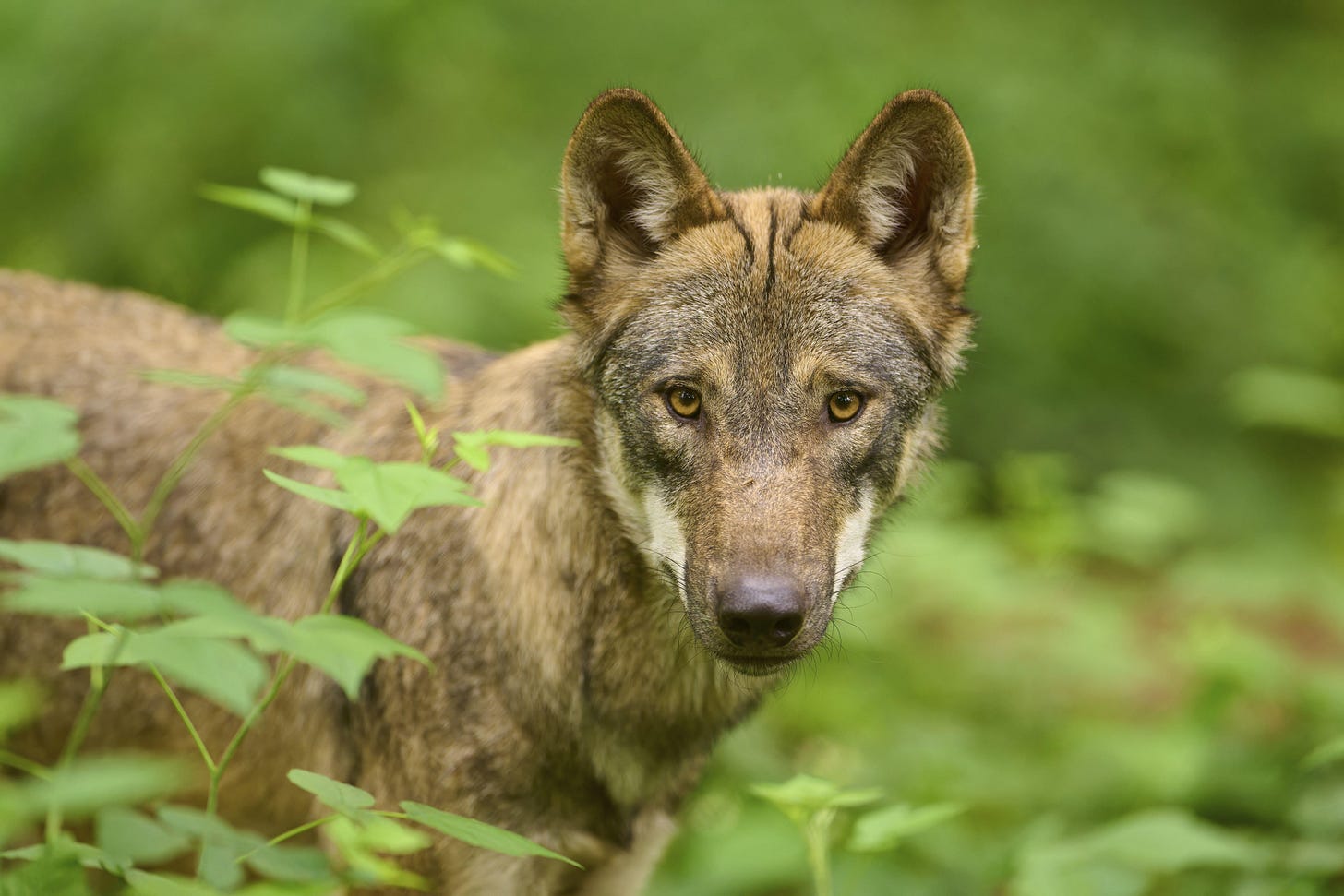'It's Time to Bring Back Scotland's Wolves'
As wolf populations grow in Europe, Adam Ramsay argues that reintroducing the apex predator could help control deer populations and rescue Scotland's ecology.
I have a neighbour who was well into adulthood before she discovered that wolves are, in fact, real. Until then, she had believed that, like griffins, dragons, or kelpies, they were mythical creatures. Her husband sometimes teases her about this. But I think she was basically right. The wolves that we in Britain grow up learning about – the fairy tale Big Bad Wolf that my four-year-old fears – are as different from canis lupus as unicorns are from rhinos.
It may be that the fairy tale monster was partly invented as a way of warning children to stay out of forests in which the real threat was men. But its primary function, arguably, is to act as a piece of capitalist propaganda, scaring us into modernity. “Don’t go into the wilds,” Charles Perrault, Hans Christian Andersen and the Brothers’ Grimm whispered to 17th, 18th and 19th century readers – echoed by Walt Disney for 20th century viewers. “There are beasts out there. Huddle into cities, be glad of your factories and your slums.”
This idea partly cuts deep because wolves are the same species as domestic dogs. Our icon of the dangers of the wild is the shadow of our best friend. Wilderness is alluring, we are warned, but beware.
Indeed, the extirpation of wolves from the British and Irish Isles is closely tied to the advance of capitalism up the archipelago.
The History
It was James VI of Scotland (later also James I of England) who, in 1577, ordered three wolf hunts a year, coinciding with cubbing season – effectively commanding that they be made extinct. It was also James VI – in 1609 – who imposed the Statutes of Iona on Scotland’s Highlands and Islands and the plantation of Ulster on Ireland, which together aimed to break the back of a Gaelic cultural universe which was organised around wholly different systems of land ownership and ways of being. It was during James’s reign that the old tanistry for example – whereby clan chieftains were semi-elected from among an eligible pool – was replaced with English-style primogeniture, starting the slow process of turning them into capitalist landlords.
James VI was also – not coincidentally – obsessed with burning women as witches, and chartered the Virginia Company, which founded Anglo-Britain’s first successful colonies outside Europe.
In other words, the clearing of wolves from the Highlands can be seen as part of the wider war on non-capitalist culture which would later also flare in the Jacobite wars, then the Highland Clearances. The last wolf in Scotland is believed to have been shot on the Braes of Killiecrankie in Perthshire in 1680, just nine years before that same gorge hosted a major Jacobite victory.
Wolves and People
This perception is a problem. Because this image we have of wolves - the idea that they stalk humans, their cultural place as the icon of the danger of wilderness - makes any sensible conversation about their importance in temperate ecologies very difficult. When I say “I want to bring back wolves,” what many people hear is “I want your child to be eaten”. And, as a parent to two small children, I can understand why that’s off-putting.
In practice, wolves stay away from people. In a comprehensive study of wolf attacks on humans in Europe and North America between 2002 and 2020, academics could only find evidence of twelve attacks, of which only two were fatal – both in North America. Conversely, in the seven years between 2008 and 2015, 74 people in the UK alone were killed by cattle. If, as climate change requires, we were to have fewer cows, and a few packs of wolves, the chances of being killed by an animal in the British countryside would reduce dramatically.
Similarly, in Scotland, on average, one person is killed and 16 seriously injured due to cars crashing into deer each year. If wolves were reintroduced, it’s likely that lives would be saved due to reduced deer numbers, and so collisions, but not lost to wolf predation.



